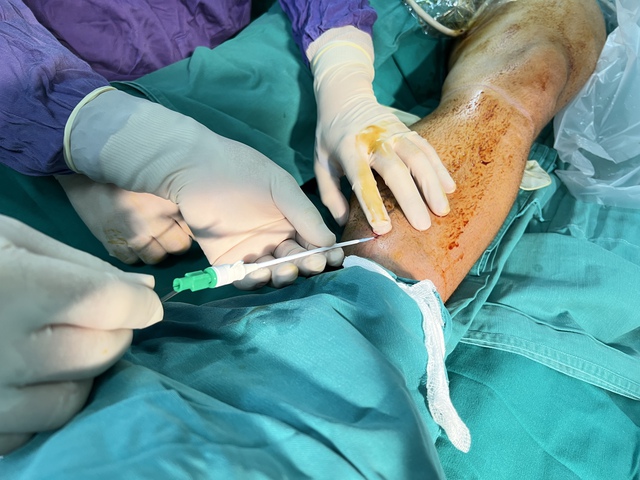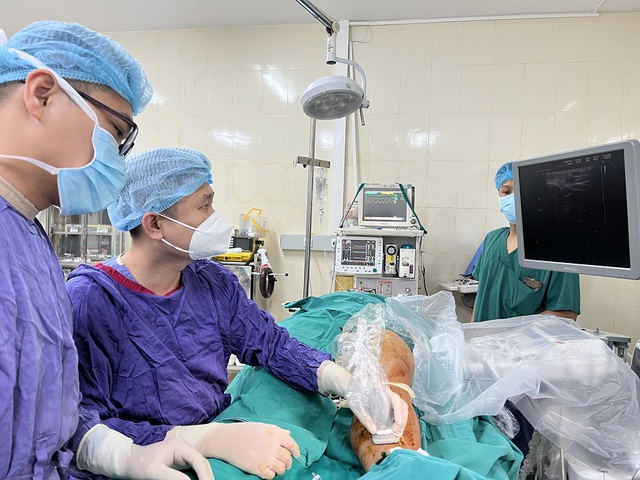Treatment of recurrent venous insufficiency with intravascular laser
03/02/2023 11:12
Viet Duc University Hospital recently took in and treated for a patient, South African nationality, diagnosed with recurrent venous insufficiency by intravascular laser
Mr. A.B (27 years old, South African nationality) was admitted to hospital in a state of fatigue, severe pain in both legs accompanied by superficial varicose veins on both sides of calf. Through taking the medical history, it is known that Mr. A.B has a history of varices and insufficiency of the large saphenous veins on both sides for many years. The patient received sclerotherapy for left leg vein insufficiency 6 years ago in South Africa.
At Viet Duc University Hospital, the patient was given a doppler ultrasound of lower extremities, detected varices and insufficiency of the left great saphenous vein valve with severe recurrence. The right great saphenous vein also has varices and severe valve failure. The cause of recurrence of the left great saphenous vein is due to recanalization after sclerotherapy and there are 2 branches of the oblique veins in the left thigh and leg segments, causing valve failure to return.

The patient was treated with intravascular laser method. (Picture: BVCC)
After a thorough examination combined with the paraclinical results, the patient was indicated to intervene in the treatment of bilateral large saphenous vein valve failure by endovascular thermal intervention using laser waves. The patient was discharged and returned to normal activities.

Dr. Le Nhat Tien, MSc, Deputy Head of Internal, Cardiovascular Intervention – Respiratory, Cardiovascular and Thoracic Center performed the technique on patient. (Picture: BVCC)
Dr. Le Nhat Tien, MS, Deputy Head of Internal, Cardiovascular Intervention – Respiratory, Cardiovascular and Thoracic Center, Viet Duc University Hospital, the person directly intervened for patient shared: Interventional method to treat bilateral large saphenous vein valve failure with intravascular laser is an efficient option, safe, minimized interference with the ratio of recovery almost completely, the rate and degree of recurrence are very low.
The method offers many advantages compared to classic surgery such as no spinal anesthesia or anesthesia, only local anesthesia, and very few complications. The patients can walk and live normally and can be discharged at the same day or the next day after the intervention.











